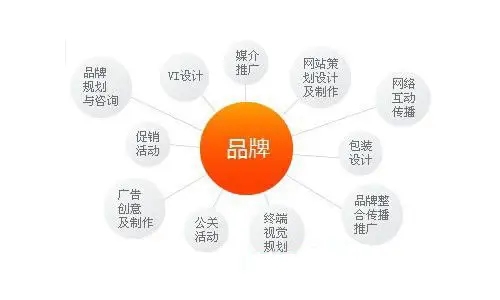Definition of brand 品牌的定义
The growth of a brand is the process it goes through from its inception to continuous growth and improvement. In this process, the brand is like a drop of water flowing out of a clear spring and finally converging into a boundless ocean; In this process, the brand bursts from a spark to a raging fire.
品牌的成长是品牌从开始创立到不断壮大完善所经历的过程。在这个过程中,品牌就是从一滴水流出一泓清泉最后汇成恣意汪洋的大海;在这个过程中,品牌从一星火迸出一片火花最后燃起熊熊烈焰的大火。
The growth of a brand is not as simple as it appears on the surface. Its connotation is rich and meaningful, condensing countless important and complex business information. In a sense, it is a microcosm of the entire business history.
品牌的成长并不象表面看起来那么的简单,它内涵丰富意味深长,浓缩了无数重要且复杂的经营信息,从某种意义上说,它是整部商业史的缩影。
Firstly, brand growth reflects the changes in the entire brand ecological environment. With the continuous growth of the economy, government encouragement of intensive models, value oriented consumer culture, promotion of new technologies for large-scale operations, expansion and differentiation of the market, deepening of competition, improvement of organization and processes, strengthening of capital operation functions, and improvement of circulation and communication efficiency, a series of brand ecological environment factors have been optimized. As a result, the status of the brand has become increasingly high, the importance of brand assets has become stronger, and the sustainability of brand advantages has become longer.
首先,品牌成长反映了整个品牌生态环境的变化,随着经济的持续增长、政府鼓励集约模式、价值取向的消费文化、新技术对大规模运营的推动、市场的扩大和分化、竞争向深层次发展、组织与流程的改进、资本运营功能的加强、流通和传播效率的提高等一系列品牌生态环境因素的优化,品牌的地位越来越高,品牌资产的重要性越来越强,品牌优势的持续性越来越长。
Secondly, brand success also reflects the brand's ability to self renew. The optimization of the brand ecosystem is both an opportunity and a challenge for brands involved in it. In order to survive and develop, brands will undergo multiple changes or even revolutions, which will show a gradual development process and obvious stages. After each stage, the brand's ability will be increasingly enhanced, and the brand strategy will continue to develop. The brand will constantly challenge itself and cross the peak.
其次,品牌成也反映了品牌自我更新的能力,品牌生态环境的优化对于卷入其中的品牌而言既是机遇也是挑战,为了求生存谋发展品牌会经历多次的变革甚至革命,这就会表现出一个逐步发展的过程并表现出明显的阶段性,每经过一个阶段品牌的能力就会日益增强,品牌战略也会得到不断的发展,品牌就这样不停地挑战自己不停地跨越巅峰。
Brand growth is an extremely important tool for brand strategy:
品牌成长是极其重要的品牌战略工具:
Firstly, brand growth establishes a model of brand science, which ignores differences in industries, regions, customers, products, technologies, channels, and other aspects. Instead, it strategically considers the brand development path from a more fundamental perspective, avoiding tedious and tedious research. Instead, it directly points to the heart of the people, achieving thoughtless and incomparable comparisons. For example, we can use it to measure brand value across regions, categories, and brands.
首先,品牌成长建立了品牌科学的模型,它忽略了行业、地区、顾客、产品、技术、渠道等差异,而是从品牌发展路线这一更加本质的角度来进行战略思考,它避免了纷繁芜杂的琐碎考据,而是直切主题直指人心,实现不能思考的思考、无法比较的比较,如我们可以利用它进行跨地域、跨品类和跨品牌的品牌价值量度。
Secondly, the brand growth curve can be used to guide the planning and implementation of brand strategy. Each stage of brand development has different characteristics, and brand strategy managers face different tasks that require different strategies, plans, and actions. However, since the future of the brand can be expected, it is also feasible to develop overall strategies while implementing phased strategies. This way, the long-term and short-term can be combined, the whole and the parts can be combined, the program and details can be combined, and the strategy and tactics can be combined to complement each other
其次,品牌成长曲线可以用来指导品牌战略的规划和实施,品牌每一个发展阶段都具有不同的特征,品牌战略管理者都面临着不同的任务,需要采取不同策略、计划和行动,但同时由于品牌未来是可以预期的,所以在阶段性策略的同时发展整体策略也是可行的,这样就能把长期和短期结合起来、把全部和局部结合起来、把纲领和细节结合起来、把战略和战术结合起来,相得益彰!
Brands have a magical life force that transcends time and space, able to dance with the vicissitudes of history but still maintain their youthful appearance. Brands in their tens and hundreds still have a vibrant and aging heart, such as the 120 year old Coca Cola, which is still "I wish to teach the world to sing, singing in perfect harmony; I wish to be with the world forever, invite him to have a cup of cola". Michelin, who has gone through 100 years, is still the muscular and agile tire man, and the 70 year old Marlboro is still the rugged, wild, and manly Western cowboy.
品牌有超越时空的神奇生命力量,能与历史沧桑起舞却依旧青春容颜,几十上百岁的品牌仍拥有活力不会衰老的心脏,如120岁高龄的可口可乐仍旧是“我愿教会世界唱歌,歌声完美和谐;我愿永远与世界同在,请他来上一杯可乐”,走过了100个年头的米其林也仍旧是那个肌肉发达健步如飞的轮胎人,70古稀之年的万宝路还是那个粗犷野性男子气十足的西部牛仔。
So brands have no lifecycle, and they will never go through the path of emergence, development, maturity, and ultimately decline like industries, products, and people. Brands are Count Dracula of Transylvania, who has obtained a promise of eternal life from heaven. They can walk until the world becomes desolate, and become the last temporary witness to the end of the world.
所以品牌没有生命周期,品牌永远不会象行业、产品和人一样经历产生、发展、成熟最终走向衰亡的不归之路,品牌是特兰西瓦尼亚的德古拉伯爵,已经从上天那里获取了永生的承诺,可以一直漫步到世界变得荒凉,可以成为世界末日来临时的最后见证。
Brand growth is actually a continuous and natural state exhibited by a brand in the pursuit of infinite possibilities, which mainly includes four predictable growth stages: branding stage, dominance stage, platformization stage, and internationalization stage.
品牌成长实际上是品牌在追求无限可能的过程中表现出连续而自然的状态,这种状态主要包括四个具有可预测性的成长阶段:品牌化阶段、强势化阶段、平台化阶段和国际化阶段。
Brand growth begins with products, at which point there is almost no brand asset value, and it is in a homogenized state relying on price competition; From here on, the first step is to enter the branding stage. Through brand strategy and operation, the product gradually possesses basic visibility, relevance, and credibility. At this point, the product evolves into a brand; Following the entry into the stage of dominance, through brand strategy and operation, gradually gained a solid reputation, sense of quality, association, loyalty, and differentiation, at which point the brand evolved into a dominant brand; Continuing into the platformization stage, through brand strategy and operation, we begin to cross different category and brand environments, demonstrating synergy, leverage, and clarity in brand combinations. At this point, strong brands evolve into wide area brands; Finally, entering the internationalization stage, through brand strategy and operation, moving from local markets to regional markets and entering the world market, achieving consistency in a diverse regional environment, at this time, wide area brands evolve into global brands.
品牌成长起始于商品,这个时候几乎没有任何品牌资产价值,处于同质化状态依赖价格竞争;从这里开始首先是进入品牌化阶段,通过品牌战略和运作,慢慢地具备了基本的能见度、相关性和可信度,这个时候商品就演进为品牌;紧跟着进入强势化阶段,通过品牌战略和运作,渐渐地具备了巩固的知名度、品质感、联想、******和差异性,这个时候品牌就演进为强势品牌;接着继续进入平台化阶段,通过品牌战略和运作,开始横跨不同的品类环境和品牌环境,展现出协同性、杠杆力和品牌组合的清晰度,这个时候强势品牌就演进为广域品牌;最后进入国际化阶段,通过品牌战略和运作,从地方市场走向区域市场迈进世界市场,在多元性地域环境中实现一致性,这个时候广域品牌就演进为全球品牌。


